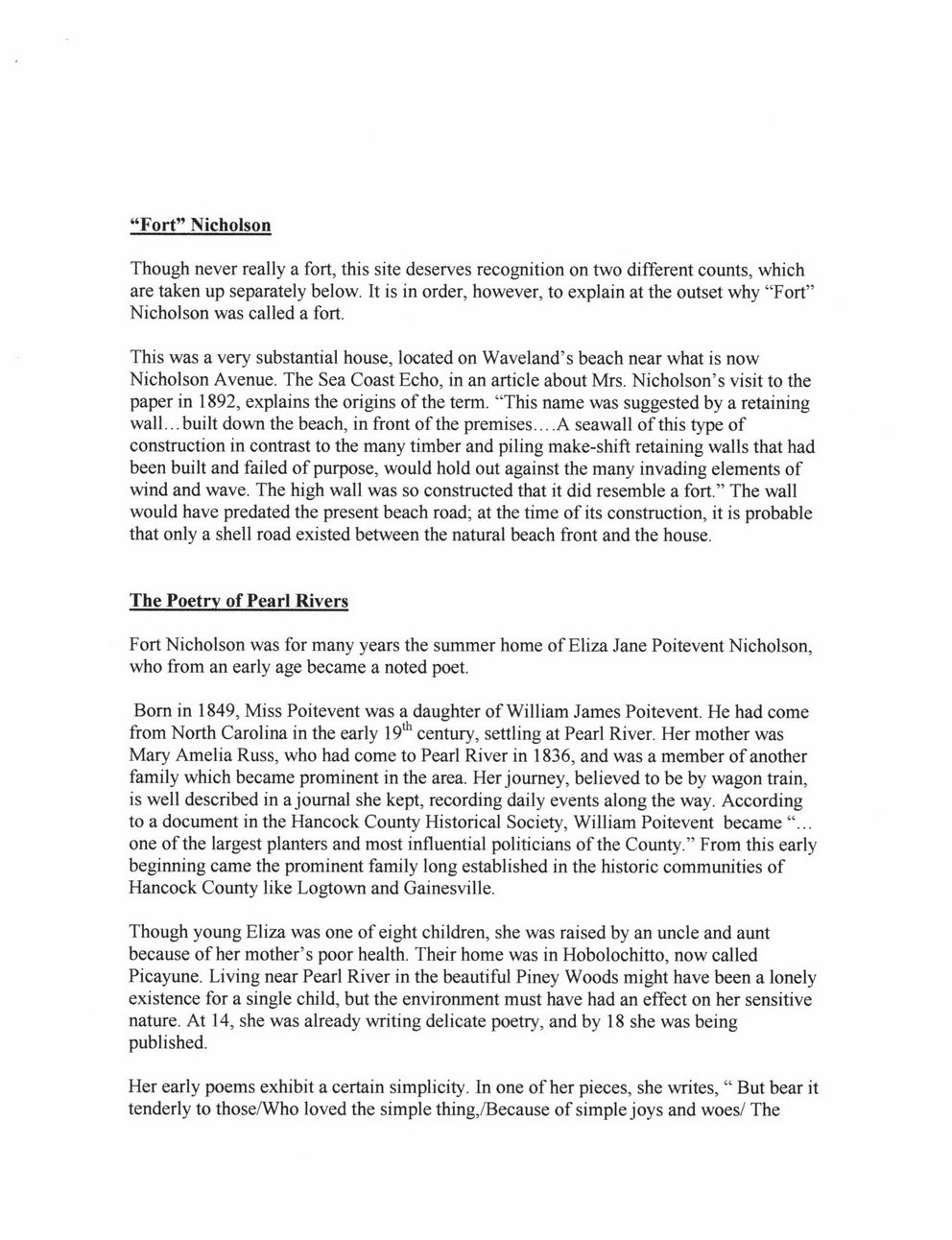This text was obtained via automated optical character recognition.
It has not been edited and may therefore contain several errors.
?Fort? Nicholson Though never really a fort, this site deserves recognition on two different counts, which are taken up separately below. It is in order, however, to explain at the outset why ?Fort? Nicholson was called a fort. This was a very substantial house, located on Waveland?s beach near what is now Nicholson Avenue. The Sea Coast Echo, in an article about Mrs. Nicholson?s visit to the paper in 1892, explains the origins of the term. ?This name was suggested by a retaining wall... built down the beach, in front of the premises... A seawall of this type of construction in contrast to the many timber and piling make-shift retaining walls that had been built and failed of purpose, would hold out against the many invading elements of wind and wave. The high wall was so constructed that it did resemble a fort.? The wall would have predated the present beach road; at the time of its construction, it is probable that only a shell road existed between the natural beach front and the house. The Poetry of Pearl Rivers Fort Nicholson was for many years the summer home of Eliza Jane Poitevent Nicholson, who from an early age became a noted poet. Bom in 1849, Miss Poitevent was a daughter of William James Poitevent. He had come from North Carolina in the early 19th century, settling at Pearl River. Her mother was Mary Amelia Russ, who had come to Pearl River in 1836, and was a member of another family which became prominent in the area. Her journey, believed to be by wagon train, is well described in a journal she kept, recording daily events along the way. According to a document in the Hancock County Historical Society, William Poitevent became one of the largest planters and most influential politicians of the County.? From this early beginning came the prominent family long established in the historic communities of Hancock County like Logtown and Gainesville. Though young Eliza was one of eight children, she was raised by an uncle and aunt because of her mother?s poor health. Their home was in Hobolochitto, now called Picayune. Living near Pearl River in the beautiful Piney Woods might have been a lonely existence for a single child, but the environment must have had an effect on her sensitive nature. At 14, she was already writing delicate poetry, and by 18 she was being published. Her early poems exhibit a certain simplicity. In one of her pieces, she writes, ? But bear it tenderly to those/Who loved the simple thing,/Because of simple joys and woes/ The

Pearl Rivers 035